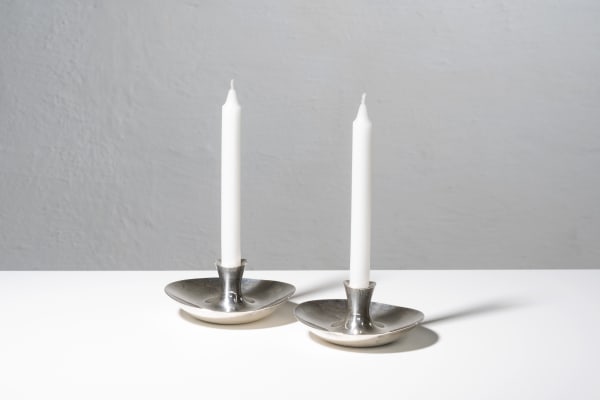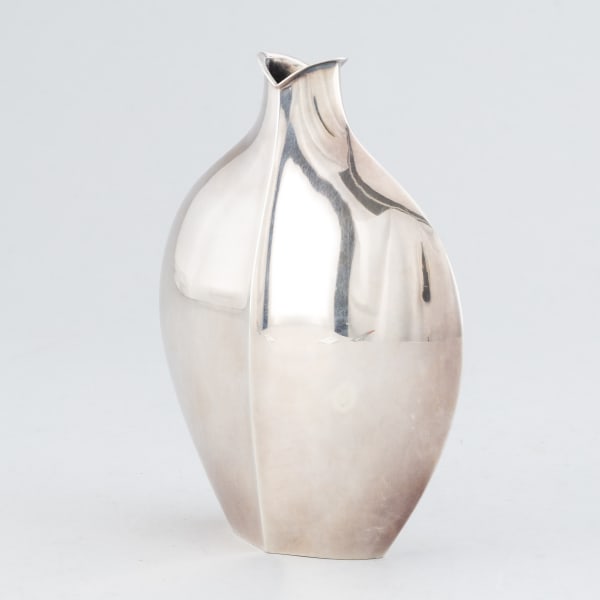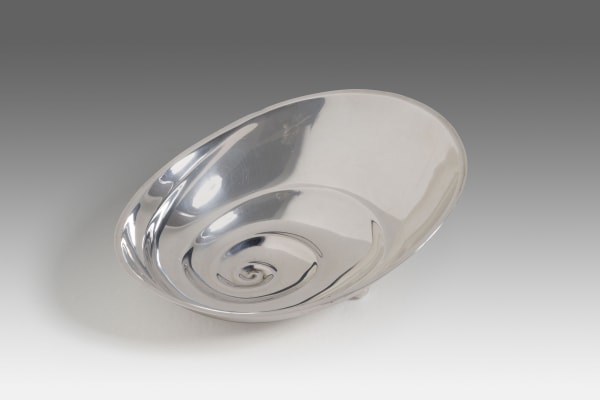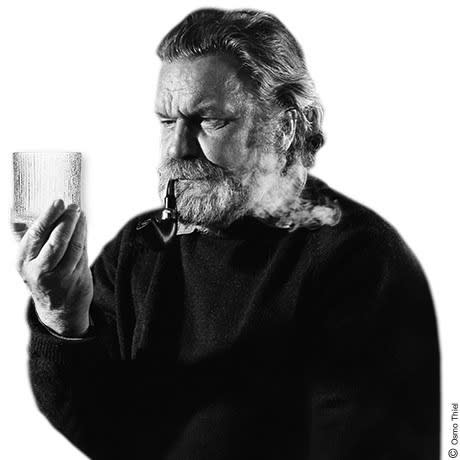Tapio Wirkkala Finland, 1915-1985
Born in Hanko, Finland, in 1915, Tapio Wirkkala was a major figure of post-war design.
He attended the Central School of Arts and Crafts in Helsinki where he studied ornemental sculpture from 1933 to 1936. In 1946, he entered a glass design competition organized by Finnish glass factory Iittala and shared the first prize with Kaj Franck. The following year, he became the artistic director of Iittala. He maintained a relationship with the factory throughout his lifetime.
A highly productive designer and artist, Wirkkala worked with very different materials and designed products of glass, wood, porcelain, metal and plastics, created sculptures, glassware, furniture and lighting.
In 1954, he worked with silver and exhibited his creation at the Triennale in Milan, which made him gained international recognition. Between 1955 and 1956, Wirkkala worked for industrial designer Raymond Loewy in New York. He also worked with several manufacturers in Europe, glass objects for the Venini glassworks in Italy and porcelain and cutlery for the Rosenthal factory in Germany. In Finland, Wirkkala designed glass for Iittala, the Ahlström corporation, light bulbs for Airam and cutlery and silver objects for the Kultakeskus company. The lighting company Idman, founded by Paavo Tynell, manufactured Wirkkala's elegant lighting.
While Wirkkala's earlier designs reflected the utilitarian beauty of Finnish functionalism, from the 1950's onward his aesthetic was rooted in the natural world. He bonded Finnish rural simplicity to universal elegance, sensitivity and discernment and managed to maintain the balance between craftsmanship and industrial techniques to create objects for the home that feature both a sculptural aspect and a scientifically researched functionalism.
Wirkkala's work was exhibited internationally and is included in important museums collections all over the world including the National Museum of Modern Art, Tokyo; the Museum of Modern Art and the Metropolitan Museum of Art, both New York; Victoria & Albert Museum, London; Bayerisches Nationalmuseum, Munich; the Nationalmuseum, Stockholm; the Royal Museum, Edinburgh; and the Corning Museum of Glass, in Corning, New York.









